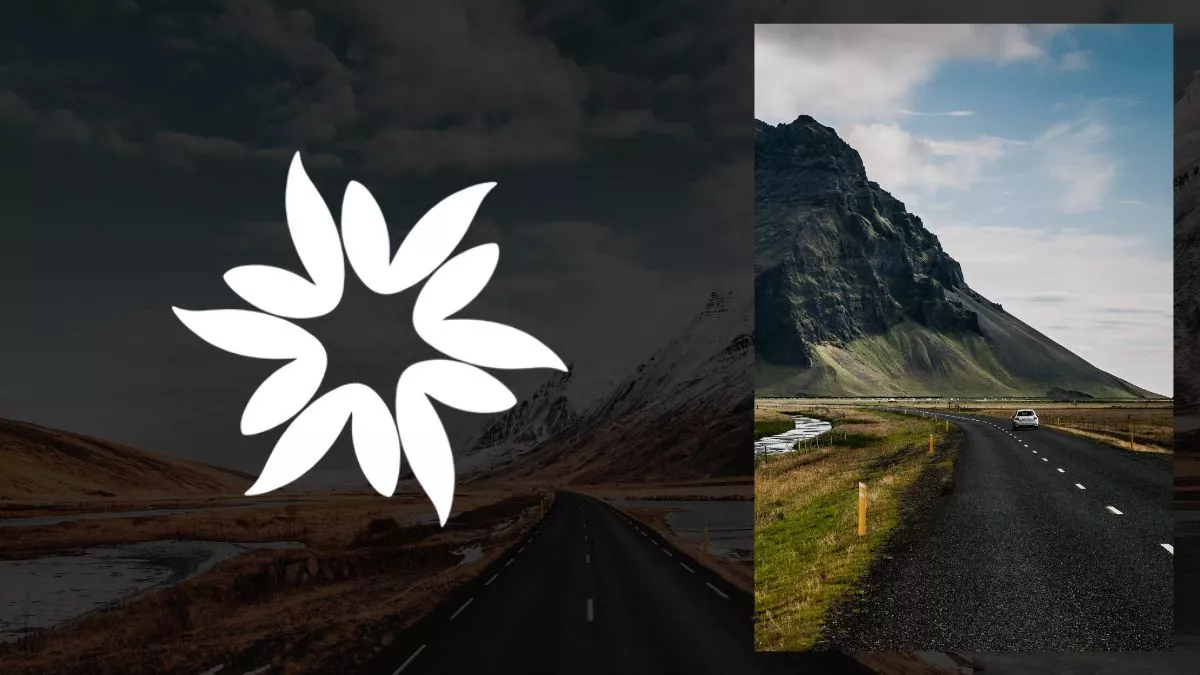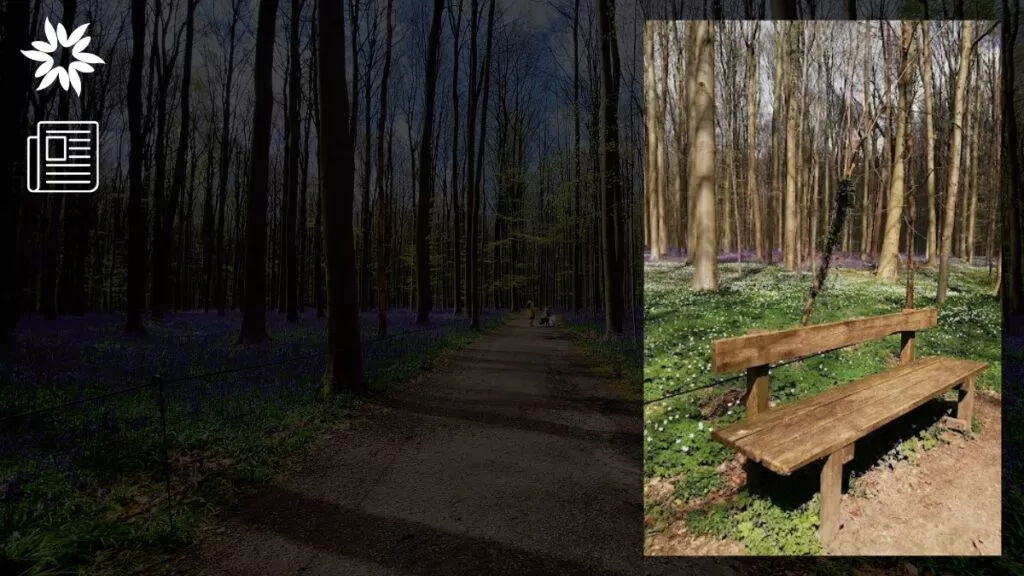If you love adventure, then road trips are probably at the top of your bucket list.
There’s something unbeatable about hitting the open road, blasting your favorite tunes, and soaking in the sights around you.
It’s the ultimate way to feel like the main character in your own travel story, no matter who’s driving.
You’ve probably heard it a hundred times—Europe has some of the best road trips in the world! And guess what? It’s totally true.
That’s why we’ve put together a list of the top road trips across Europe, handpicked by travelers just like you.
Ready for the ride of a lifetime? Let’s go!
Key Takeaways
- On routes like Iceland’s Ring Road or Scotland’s NC500, weather can change quickly. Make sure your vehicle is equipped with essentials like a spare tire, and pack for both cold and wet conditions.
- Map out must-see locations like Italy’s Amalfi Coast or the Cliffs of Moher on Ireland’s Wild Atlantic Way, but leave time for detours and hidden gems along the way. Enjoy local culture, food, and scenic viewpoints.
- Each country has specific driving regulations—research road passes (vignettes), toll roads, and speed limits before your trip. Prepare for narrow, winding roads, especially in mountainous or coastal areas like the Dolomites or Amalfi Coast.
1. Iceland’s Ring Road (Route 1)
First up is Iceland’s Ring Road, also known as Route 1, one of Europe’s most epic road trips.
This 1,333-kilometer (828-mile) loop around the island lets you experience some of the planet’s most jaw-dropping landscapes.
If you’ve got about a week, that’s plenty of time to soak in Iceland’s natural wonders along the way.
Most people start in Reykjavik and head south, where you’ll pass iconic spots like the stunning Seljalandsfoss and Skógafoss waterfalls—perfect for photos and quick hikes.
Keep going east, and you’ll hit the magical Jökulsárlón Glacier Lagoon, where icebergs float serenely. And nearby is Vatnajökull National Park, home to Europe’s largest glacier, so you’ll probably want to check that out.
Amazingly, the eastern coast features the tranquil East Fjords sprinkled with charming little fishing villages.
When you hit the north, you’ll feel like you’ve landed on another planet near Lake Mývatn, where you’ll find bubbling mud pots, volcanic craters, and steamy geothermal pools.
Stop at Dettifoss, Europe’s most powerful waterfall, and the beautiful Ásbyrgi Canyon.
Oh, and it’s worth noting that the west side of Iceland is just as spectacular, especially the Snæfellsnes Peninsula, which is like a mini version of Iceland with mountains, glaciers, lava fields, and gorgeous coastlines.
You can even visit the famous Blue Lagoon near Reykjavik to relax in geothermal waters.
Iceland’s Ring Road has waterfalls, geysers, glaciers, and black sand beaches. It’s an adventure, but be ready for the unpredictable weather—it’s all part of the fun, though.
Sure, careful planning will help make sure your trip is smooth, but the ever-changing conditions definitely add a dash of excitement!
2. North Coast 500, Scotland
Scotland’s North Coast 500 (NC500) is like the Scottish version of Route 66 but with its own wild and rugged charm.
Spanning 830 kilometers (516 miles), this loop starts at Inverness Castle and ends at the same spot. Incredibly, it takes you through some of the most breathtaking landscapes the Scottish Highlands offer.
After starting from Inverness, you’ll head along the Beauly Firth towards the northwestern Highlands, passing through postcard-perfect villages like Ullapool. The scenery gets raw and untamed—think dramatic cliffs, deep lochs, and miles of wilderness.
One highlight is Bealach na Bà, a winding mountain road with incredible views that’ll make you feel like you’re on top of the world.
Up north, don’t miss the ancient town of Durness, where you can explore the impressive Smoo Cave, which is a natural sea cave you can even visit by boat.
Keep going east, and you’ll reach John O’Groats, the northernmost tip of the UK, with views of the Orkney Islands in the distance.
And there’s no doubt that history buffs will love stops like Dunrobin Castle, which looks like something out of a fairytale with its grand architecture and lush gardens, and the ruins of Castle Sinclair Girnigoe, sitting high above the North Sea.
Along the way, you’ll find some of the UK’s most stunning beaches, like Sandwood Bay and Achmelvich Beach, known for their white sand and crystal-clear waters.
The NC500 is, actually, much more than natural beauty and history—it’s also a great way to dive into Scottish culture. You can sample fresh seafood in coastal villages and stop by Highland distilleries for some whisky tastings.
To enjoy the route, it’s best to spend at least a week or more discovering hidden gems, from cozy B&Bs to scenic hiking spots.
With its wild landscapes and peaceful isolation, the NC500 is the perfect European road trip to escape everyday life and reconnect with nature.
3. Amalfi Coast, Italy
The Amalfi Coast is famous for its jaw-dropping cliffs, charming little villages, and stunning seaside views.
Driving from Sorrento to Salerno, you’ll cover a 50-kilometer (31-mile) stretch that hugs the picturesque coastline, ideal for a memorable Mediterranean road trip.
The narrow, winding roads snake through some of Italy’s most beautiful towns, like Positano, Amalfi, and Ravello.
Positano is often the first stop, where pastel-colored houses spill down the cliffs toward the beach. Once you’re there, it’s a great place to browse cute boutiques, take a dip in the sea, and enjoy some fresh seafood.
A bit further along is Amalfi, which gives the coast its name. Here, you can explore the impressive Amalfi Cathedral and the Cloister of Paradise, which surely highlight the town’s deep historical roots and stunning architecture.
And just a short drive uphill from Amalfi is Ravello, known for its terraced gardens and jaw-dropping views.
At Villa Rufolo and Villa Cimbrone, the beautifully landscaped gardens offer stunning Mediterranean vistas.
Ravello also becomes a hotspot for classical music concerts in its scenic gardens in the summer.
Beyond the famous spots, the Amalfi Coast has hidden gems like Praiano and Furore, where you can dodge the crowds and soak up the peaceful surroundings.
For adventure seekers, the Path of the Gods is a must-do. It’s one of the most breathtaking hiking trails, offering stunning views of the coastline from a high vantage point.
How could we forget? The coast is packed with culture, too. You can quickly detour to Pompeii, where the ancient ruins frozen by the eruption of Mount Vesuvius will take you back to Roman times.
And if you love food, the coast is famous for its fresh seafood, lemons (used to make the famous Limoncello), and traditional dishes like scialatielli ai frutti di mare.
Driving here can be tricky, especially in the busy summer months, but the experience is worth it.
You could drive the whole route in a few hours, but why rush? You may as well take a few days to soak it all in—explore hidden corners, relax on the beaches, and enjoy the delicious local food.
4. Romantic Road, Germany
Germany’s Romantic Road is like stepping into a fairy tale, seriously.
This 350-kilometer (217-mile) route takes you through the heart of Bavaria, passing charming villages, medieval towns, and grand castles.
Indeed, it’s one of the best ways to experience Germany’s rich history and culture.
The journey begins in Würzburg, home to the stunning Würzburg Residence, a UNESCO World Heritage site known for its incredible Baroque architecture and beautiful gardens.
From here, the road winds through Bavaria’s rolling hills dotted with vineyards.
One of the highlights is Rothenburg ob der Tauber, a town that feels like it’s straight out of a storybook. With cobblestone streets, half-timbered houses, and ancient walls, it’s one of the best-preserved medieval towns in Germany.
You can’t miss the Christmas Museum or the year-round Christmas Market that adds a little extra magic.
Another showstopper on the Romantic Road is Neuschwanstein Castle. Perched on a rugged hill, this 19th-century palace built by King Ludwig II is the definition of a fairy tale castle—it even inspired Disney’s Sleeping Beauty Castle.
You can also visit the less famous but equally beautiful Hohenschwangau Castle nearby.
As you travel along, you’ll pass through smaller villages like Dinkelsbühl and Nördlingen, where the medieval vibe is still very much alive.
You’ll have the chance to explore ancient city walls, climb towers, and immerse yourself in the local Bavarian culture with stops at vineyards, regional restaurants, and centuries-old churches.
The trip ends in Füssen, a town near the Bavarian Alps. Along the way, you can explore Germany’s highest peak, the Zugspitze, whether you’re up for a hike or just want to soak in the stunning alpine views.
To truly appreciate it, the Romantic Road is best enjoyed slowly, over several days, so you can fully experience the history, culture, and picture-perfect landscapes.
5. Wild Atlantic Way, Ireland
The Wild Atlantic Way is one of the longest coastal drives in the world, stretching over 2,500 kilometers (about 1,550 miles) along Ireland’s west coast, from Malin Head in the north to the Old Head of Kinsale in the south.
This route is a nature lover’s dream, full of dramatic cliffs, wide bays, and rolling green hills that seem to go on forever.
It usually takes around two to three weeks to enjoy the trip, giving you plenty of time to soak up the stunning scenery, lively culture, and rich history along the way.
The journey starts at Malin Head, Ireland’s northernmost point, where the rugged beauty of County Donegal greets you. You’ll want to visit the jaw-dropping Slieve League Cliffs, which stand among Europe’s tallest at 600 meters (nearly 2,000 feet).
Glenveagh National Park is also in Donegal, and it offers beautiful hikes through valleys and a chance to explore Glenveagh Castle.
As you continue south, you’ll hit County Mayo, home to peaceful Achill Island and its postcard-perfect Keem Bay.
Think towering cliffs, quiet beaches, and quaint Irish villages. Then, in County Galway, Connemara National Park has more stunning landscapes, with a mix of mountains, bogs, and lakes.
And don’t miss a stop in Galway, which is known for its artsy vibe, live traditional music, and colorful streets full of shops and pubs.
Next are the world-famous Cliffs of Moher in County Clare, where the towering limestone cliffs drop straight into the wild Atlantic below—a sight you won’t forget.
From there, the route leads through the Burren, a one-of-a-kind landscape dotted with ancient stone tombs and lush meadows.
In County Kerry, you’ll find the scenic Ring of Kerry and Dingle Peninsula, with narrow winding roads that offer incredible views of the mountains and sea.
The town of Dingle is a must-see, with its cozy pubs and laid-back charm, and if you’re up for it, take a boat trip to the remote Blasket Islands.
As the route nears County Cork, things slow down a bit with peaceful fishing villages like Kinsale and Clonakilty.
In Cork, go and explore historic castles, stroll along sandy beaches, and visit Mizen Head, the southernmost tip of Ireland, for breathtaking views.
The journey along the Wild Atlantic Way concludes at the Old Head of Kinsale. Picture standing on top of rugged cliffs with a lighthouse nearby, all while watching the waves crash below—truly a memorable way to wrap up such an incredible adventure.
6. Transfăgărășan Highway, Romania
The Transfăgărășan Highway in Romania is known as one of the most thrilling and scenic roads on the planet. So, it’s more than ideal for your European road trip.
Stretching 150 kilometers (around 93 miles) through the towering Carpathian Mountains, this winding route was originally built by the Romanian military in the 1970s, but today it’s a bucket-list destination for road trippers and adventurers.
The road starts in the village of Bascov and ends in Cârțișoara, taking you through valleys, over mountain passes, and beside crystal-clear lakes.
What makes this highway stand out are its tight hairpin turns, steep climbs, and tunnels that will get your adrenaline pumping.
At its highest point, the road reaches 2,042 meters (around 6,700 feet), where you’ll find incredible views of the surrounding mountains and valleys. The highlight at the top is Bâlea Lake, a beautiful glacial lake tucked away in a valley surrounded by sharp peaks.
In the summer, it’s a great spot for hiking and picnics, while in winter, the area becomes a snowy wonderland ideal for scenic walks and snowshoeing.
As you drive, you’ll also pass Vidraru Dam, a massive structure that creates the picturesque Lake Vidraru.
Standing 166 meters (over 540 feet) tall, the dam is a marvel of engineering, and if you’re feeling brave, you can even try bungee jumping off the side!
If you’re fascinated by history, you’ll love Poenari Fortress, the real castle of Vlad the Impaler, which inspired the legend of Dracula.
Found high on a cliff, getting to the fortress requires climbing nearly 1,500 steps, but once you’re up there, you’ll be rewarded with sweeping views of the Argeș Valley.
The best time to tackle the Transfăgărășan is from June to October when the road is open, as snow often closes it in the winter.
Take your time on this thrilling drive. The sharp curves and steep slopes require slow, careful driving, but the views and adventure are well worth it.
That said, it’s no wonder this highway is considered one of Europe’s most unforgettable road trips!
7. Dolomites Road Trip, Italy
A road trip through the Dolomites in Northern Italy is one of Europe’s most beautiful and exciting drives, especially on the Great Dolomites Road.
The route is about 110 kilometers (68 miles) long, winding through stunning cliffs, green meadows, and clear lakes.
Starting in Bolzano and ending in Cortina d’Ampezzo, you’ll get amazing mountain views and cute villages along the way.
A popular stop is the Pordoi Pass, at 2,239 meters (7,346 feet), where the road twists and turns, offering incredible views.
You can even take a cable car up to the Sass Pordoi at 2,950 meters, often called the “Terrace of the Dolomites” for its breathtaking scenery.
As you go further, you’ll drive through pretty villages like Ortisei in Val Gardena, which is great for hiking in the summer and skiing in the winter. You’ll also get a taste of the unique Ladin culture, where the food deliciously combines Italian and Alpine influences.
Another must-see is Lago di Braies, a peaceful lake surrounded by mountains, perfect for a quiet walk or a boat ride on its green waters.
If you’re into history, stop by the WWI Museum at Cinque Torri to learn about battles fought in these mountains, with old bunkers and trenches still there to see.
For hikers, the Tre Cime di Lavaredo (Three Peaks) is one of the most famous trails in the region, with stunning views of the jagged peaks.
The trip ends in Cortina d’Ampezzo, a fancy mountain town known for its ski resorts and stylish shops.
But the real attraction is the natural beauty, with the Dolomites all around. Whether you’re hiking or just relaxing in town, the Dolomites Road Trip is perfect for nature lovers and anyone who enjoys scenic drives.
8. Basque Circuit, Spain and France
Next, we have the Basque Circuit—a fantastic road trip that takes you through the heart of Basque culture, with both coastal and mountain landscapes in northern Spain and southwestern France.
The trip covers about 482 kilometers (300 miles) and starts in Bilbao, Spain, which is known for its artsy vibe and the iconic Guggenheim Museum.
If you explore further, the old part of town is also worth checking out, with its narrow streets, traditional Basque food, and lively nightlife.
From Bilbao, you head east to San Sebastián (Donostia in Basque), one of Spain’s most beautiful coastal cities. And it’s famous for La Concha Bay and its amazing local food.
You can enjoy pintxos (Basque tapas) and visit some of the best restaurants in Europe. Plus, the hills around the city are great for hiking and offer great coastline views.
Crossing into France, the trip takes you to Biarritz, a stylish beach town known for its fancy buildings and surf spots.
Once a summer escape for European royalty, Biarritz still has a glamorous vibe, with grand hotels, casinos, and elegant promenades.
You’ll also find plenty of Basque culture here, with markets offering local cheeses, wines, and other treats.
The trip then heads inland through the green hills of the Pyrenees, passing through small Basque villages like Espelette, famous for its red peppers, and Saint-Jean-Pied-de-Port, a stop on the Camino de Santiago pilgrimage route.
The scenery here is, most definitely, a nice contrast to the coast, with rolling hills, forests, and traditional houses with red wooden beams.
For history lovers, the region is full of old sites, from prehistoric caves to medieval forts. Bayonne, a French town known for its medieval walls and Gothic cathedral, offers a deep dive into Basque history and culture.
Throughout the trip, you’ll experience Basque traditions, from their unique language to their strong cultural pride.
9. Faroe Islands Road Trip
The Faroe Islands offer one of the most magical, off-the-beaten-path road trips imaginable.
Perfect for adventurers looking for dramatic landscapes and a bit of solitude, this cluster of 18 islands in the North Atlantic is connected by an impressive network of bridges, tunnels, and ferries.
And, amazingly, each island brings something unique, from its towering cliffs to serene villages with old-school turf-roofed houses.
One of the must-visit islands is Kalsoy, which you can reach via a short ferry ride from Klaksvík. Even the ferry ride feels like an introduction to a hidden world, with rolling mist and the promise of untamed beauty.
Once you’re on Kalsoy, the adventure kicks into gear with a drive through narrow, one-lane tunnels (yep, they’re as thrilling as they sound!). You’ll go to Trøllanes, a peaceful village almost frozen in time.
This is where the famous hike to Kallur Lighthouse begins. The hike isn’t too long—around 45 minutes each way—but the views are absolutely worth it.
As you hike through green hills and pass sheep grazing nearby, you’ll finally reach the lighthouse, perched dramatically on the edge of a cliff.
The surrounding views, with islands like Kunoy and Viðoy in the distance, are breathtaking.
Fun fact: the epic scenery here was even featured in the James Bond movie No Time to Die.
But there’s much more to the Faroe Islands than Kalsoy. You’ve got Múlafossur Waterfall on Vágar Island, where water tumbles straight into the ocean, and the charming village of Mikladalur, famous for its statue of the legendary Seal Woman.
With winding roads that seem to disappear into misty fjords and endless cliffs, every twist and turn brings a new, postcard-worthy sight.
However, a quick heads up—weather in the Faroes changes fast, and the islands are home to free-roaming sheep, so drive carefully!
10. Mallorca’s Tramuntana Road, Spain
Mallorca’s Tramuntana Road (Ma-10) is a must for those craving a road trip that mixes thrilling mountain roads with stunning sea views.
This stretch, covering 100 kilometers (62 miles), cuts through the rugged Serra de Tramuntana mountain range, which is a UNESCO World Heritage site because of its jaw-dropping beauty and cultural significance.
Starting in Andratx, this route quickly delivers dramatic coastal views as you navigate sharp hairpin bends and climb cliffs, all with the sparkling Mediterranean as your backdrop.
One of the first stops is the artistic village of Deià, known for its cobblestone streets, charming cafes, and the legacy of writer Robert Graves, who lived here.
We say it’s the perfect place for a coffee break while soaking in the serene views.
Further along, you’ll reach Valldemossa, a village famous for its monastery, the Charterhouse of Valldemossa, where Chopin and George Sand once spent a winter.
Wandering through the quiet streets of Valldemossa, surrounded by mountains, it’s easy to see why so many artists and writers have found inspiration here.
As you continue, the road gets even more thrilling, with twists and turns leading down to Sa Calobra, one of Mallorca’s most iconic coastal spots.
But driving down to Sa Calobra is an adventure in itself, with its tight bends and dramatic drops.
Once there, you can explore the hidden cove or venture into the Torrent de Pareis canyon for a hike that takes you through towering cliffs to the sea.
One of the spiritual highlights of the road trip is the Lluc Monastery, nestled in the heart of the mountains.
Surrounded by hiking trails and panoramic views, this sanctuary has been a pilgrimage site for centuries.
Not to mention, you’ll also pass idyllic beaches and coves like Cala Tuent and Cala Deià, where you can take a dip in crystal-clear waters or relax under the sun.
Finally, you’ll reach the northern town of Sóller, known for its vintage tram, historic train, and lively town square.
Mallorca’s Tramuntana Road is a full sensory experience combining natural beauty, cultural richness, and adventure.
Tips for Planning Your European Road Trip
Are you planning a road trip around Europe? Awesome! It’s a great way to soak in the sights, but you’ll need to prepare to ensure everything runs smoothly.
So, here are some quick, easy tips to help you have the best time.
1. Get Your Ride Ready
Check the tires, oil, and coolant, and bring a spare tire and toolkit. If you’re renting, confirm it’s okay to drive the car across multiple countries and that you have the required insurance.
In most European countries, you’ll also need an emergency kit with items like a warning triangle, reflective vests, and a first aid kit.
2. Map It Out (But Stay Flexible)
Plan your route using apps like Google Maps. Avoid overdoing it with long drives—try to limit yourself to 2-3 hours of driving each day.
Some areas, like mountain regions, may take longer than expected, so leave room for detours and unexpected gemsin your schedule.
3. Book Your Stays Early
In popular areas like the French Riviera or Tuscany, hotels fill up fast, especially during tourist season.
Book in advance to avoid being stranded, particularly in remote areas. If you want more flexibility, consider renting a campervan—wild camping is allowed in several countries.
4. Learn the Road Rules
Different countries have different road rules. Some places require you to have your headlights on during the day or carry specific items like reflective vests for each passenger.
Be sure to research the rules for every country you visit. Also, know the toll system—many European countries have toll roads or require vignettes (road passes) for highways.
5. Watch Out for Fuel and Tolls
Fuel and tolls can vary widely between countries. France, for example, has expensive toll roads, while in some countries, you might need to pay tolls online ahead of time.
Plan your budget to include these costs, and use apps like ViaMichelin or TollGuru to calculate your total cost.
6. Go Off the Beaten Path
While Europe’s big cities are great, don’t be afraid to explore smaller towns, local markets, and scenic backroads.
You’ll avoid crowds and get a more authentic experience. Plus, taking the scenic route often means more beautiful drives.
7. Handle Those Toll Roads
Some countries like Switzerland and Austria use vignettes (stickers you buy for highway access), while others charge based on distance.
Make sure you understand the payment methods. In some countries, you can pay your tolls online to avoid fines.
8. Don’t Forget Your Documents
You should always carry your driver’s license, passport, car registration, and insurance papers. If you’re crossing into non-EU countries, check if you need a visa or extra paperwork.
Also, double-check that your insurance covers all the countries on your route.
9. Choose the Right Time to Go
Timing is important. If you’re driving through Mediterranean countries, spring or fall is the best time to avoid the crowds.
For places like Norway or Iceland, summer is the safest time to avoid bad weather. If you’re road-tripping in winter, be prepared for snow and make sure your car has winter tires.
10. Stay Connected
GPS is great, but don’t rely on it 100%—especially in remote areas where cell signal can drop. Keep a paper map, just in case.
Grab a local SIM card, or make sure your phone plan covers Europe to avoid roaming fees. Many countries have good public Wi-Fi, too, so you can stay online easily.
Pick Your Dream Route, and Let the Journey Begin!
Alright, so you’ve just cruised through 10 of the most epic road trips Europe has to offer, and now the big question is—which road will you conquer first?
Are you the type to chase glaciers and waterfalls around Iceland’s Ring Road, braving the moody weather just to snap that perfect shot of an iceberg floating by?
Or maybe you’re itching to feel the wind in your hair as you wind through Scotland’s North Coast 500, with its whisky distilleries, rugged cliffs, and that “I’m in the middle of nowhere, and I love it” vibe.
Perhaps you’ve got your heart set on Italy’s Amalfi Coast, where every hairpin turn reveals another ridiculously picturesque village spilling down the cliffs, and you can’t help but stop for some gelato and a quick dip in the Mediterranean.
Or maybe the romance of Germany’s medieval castles along the Romantic Road is calling your name—you know, living out that fairytale fantasy.
Whichever route gets your engine revving, there’s no wrong choice! And the best part? You’re in control of this adventure.
Want to stop every five minutes for a photo op or stay an extra day in that cute little village you stumbled upon? Do it. The road trip is yours to own.
So, what are you waiting for? The road is wide open, and the world is filled with hidden gems waiting for you to discover them.
Grab the keys, buckle up, and let the adventure of a lifetime begin!








